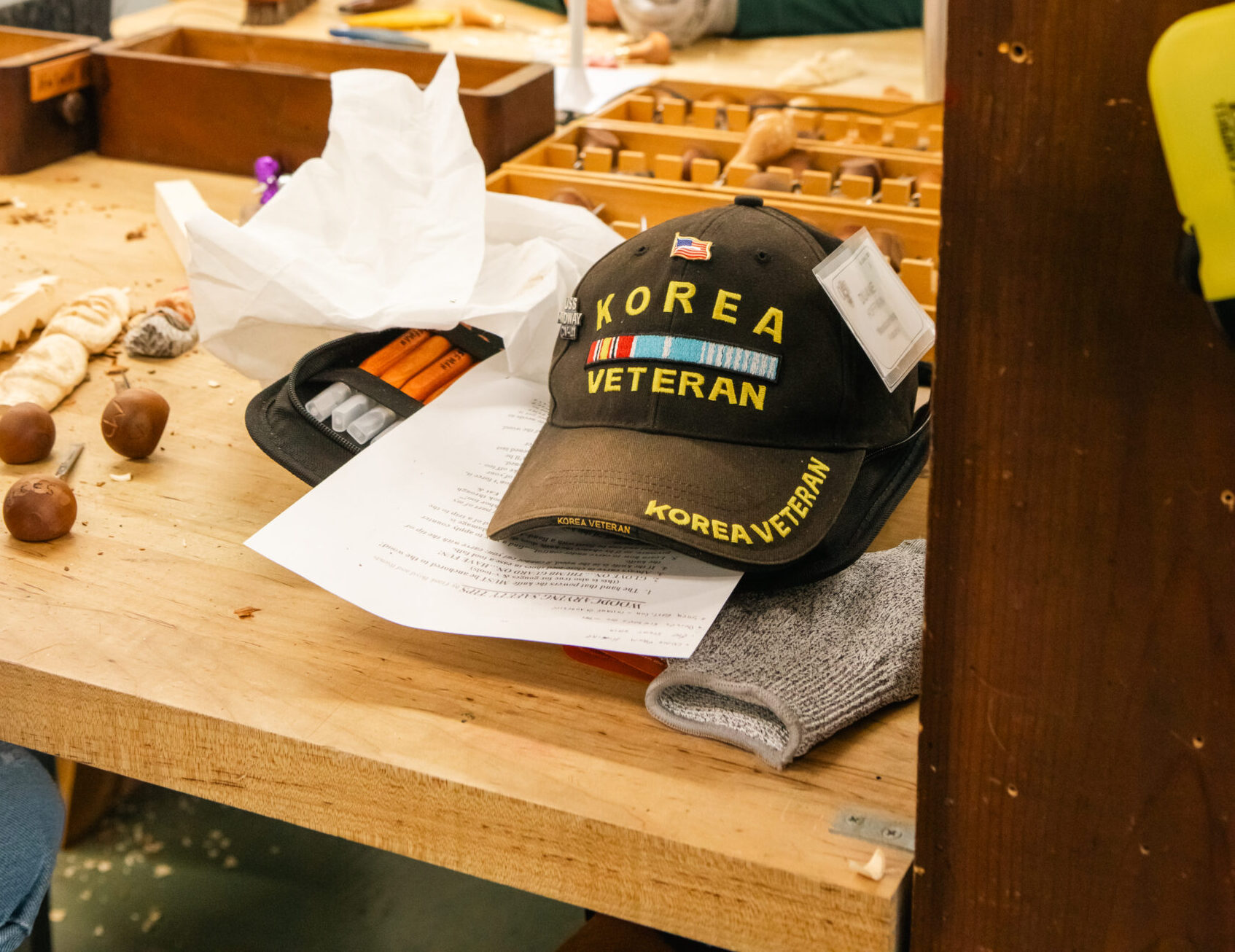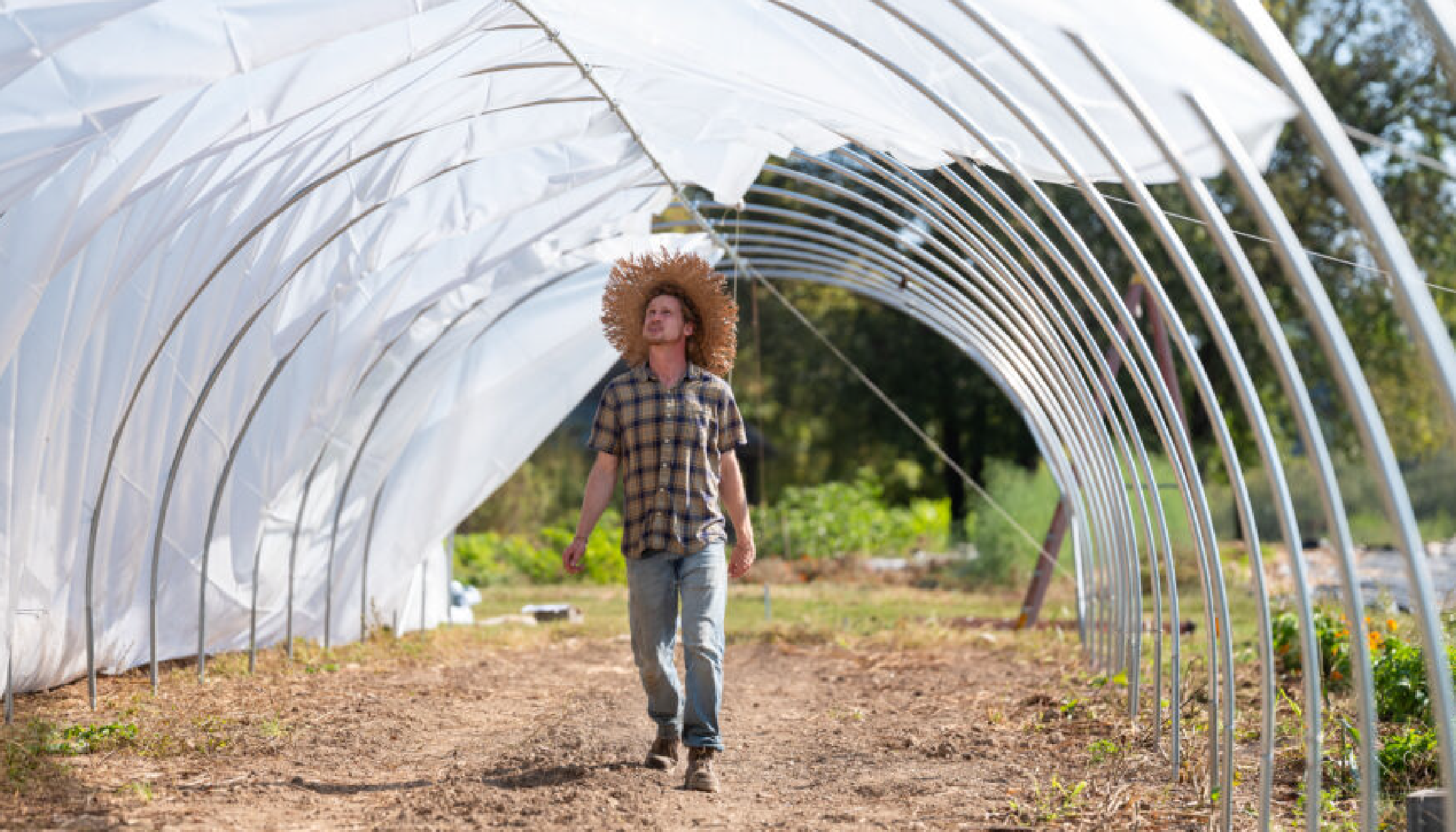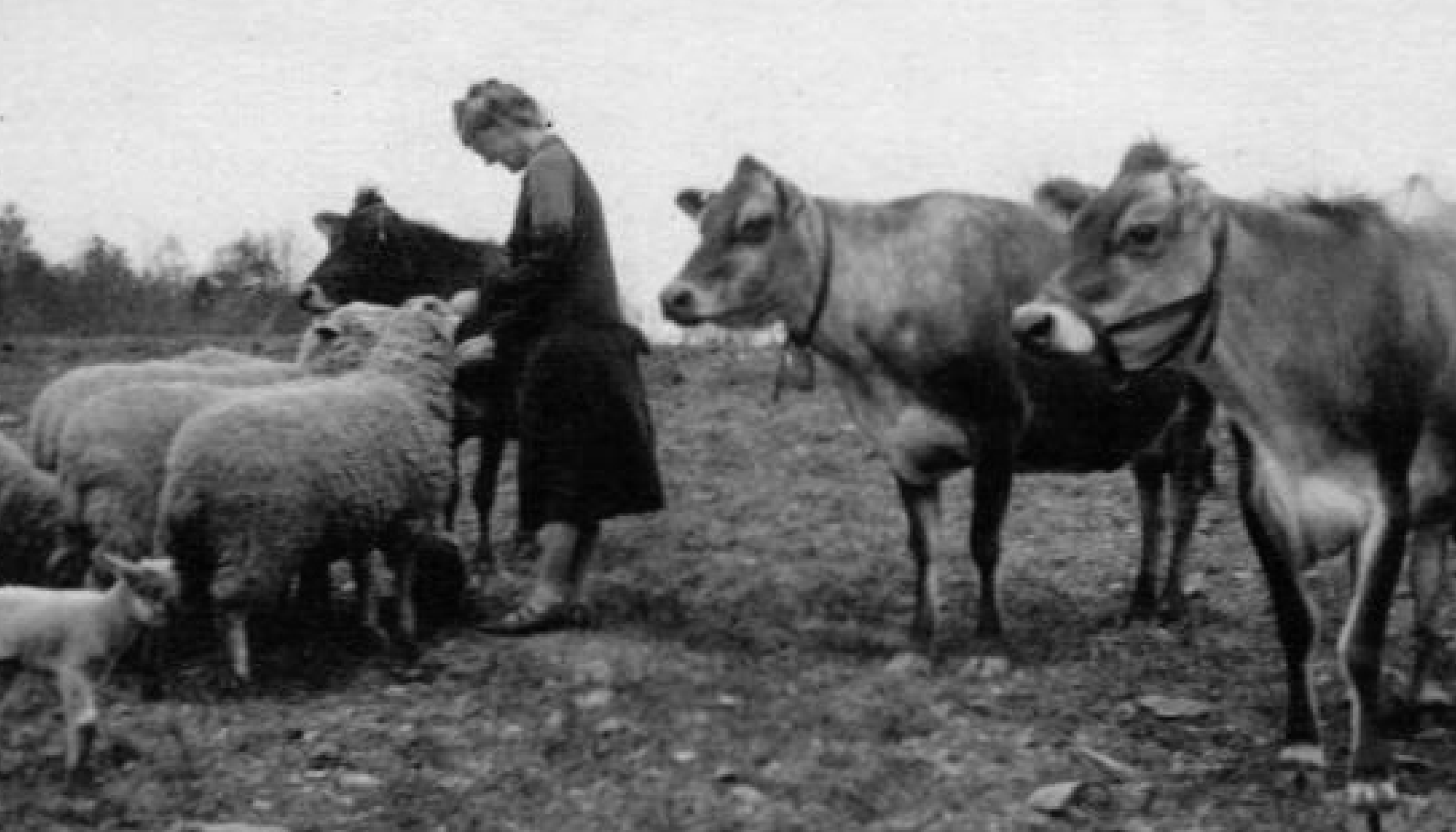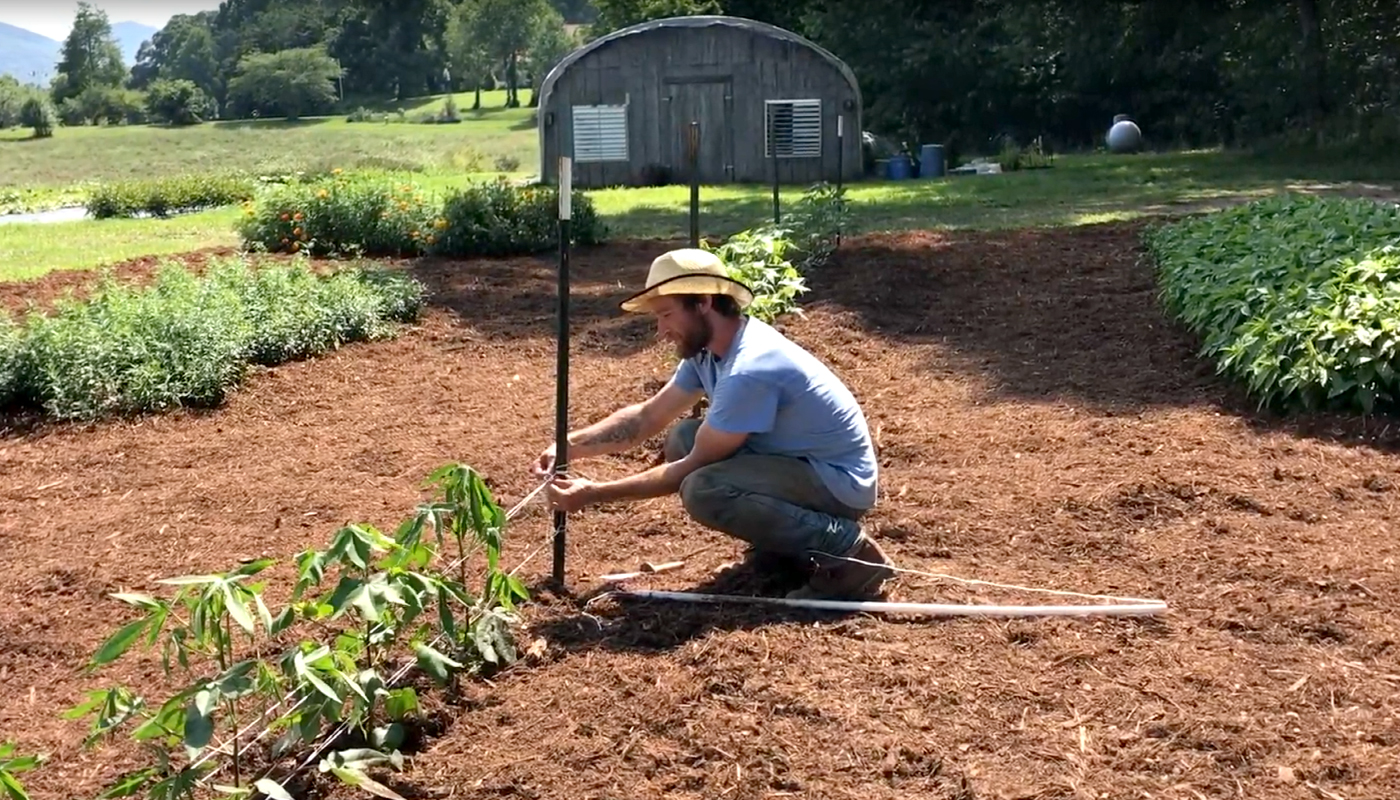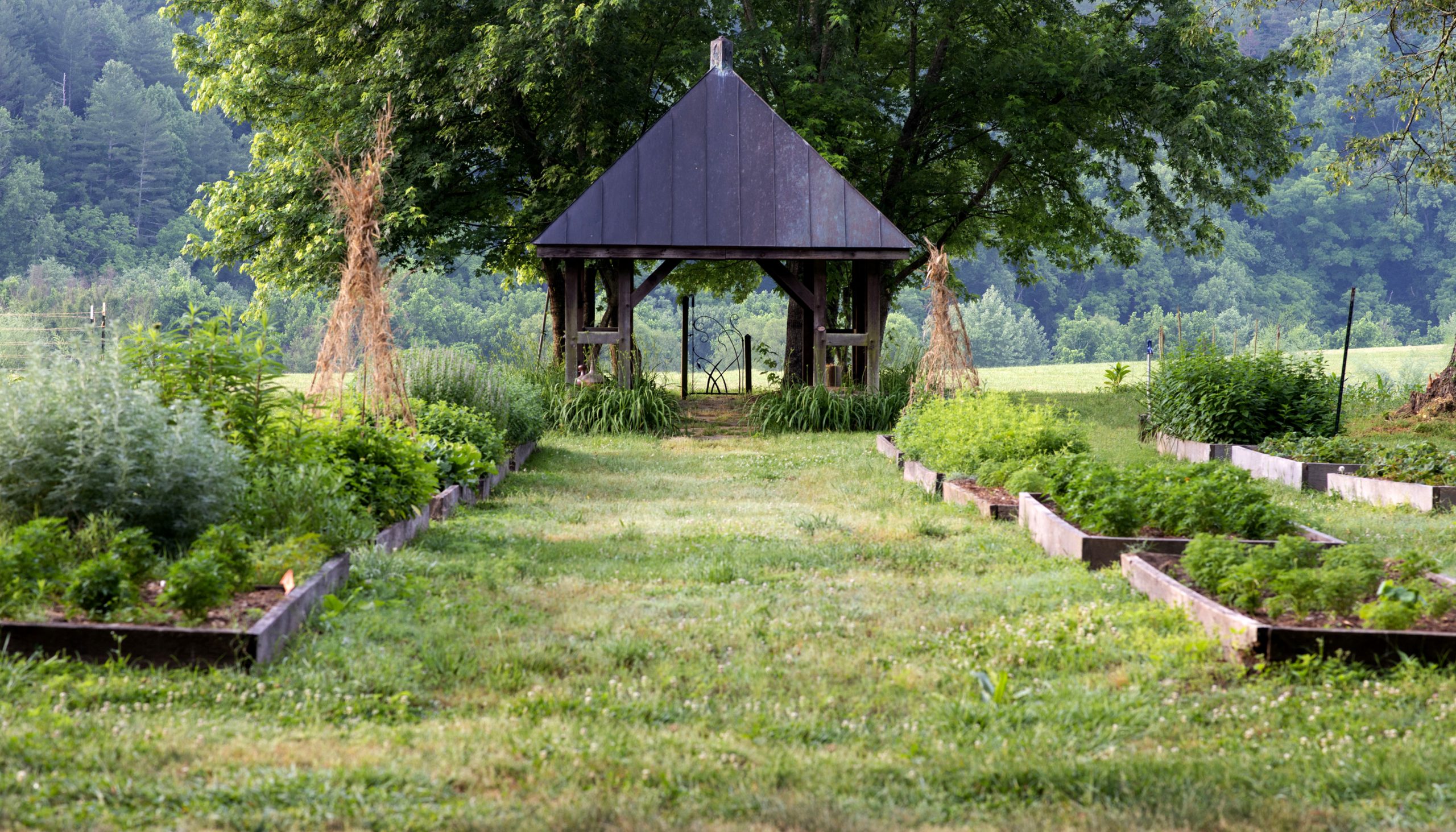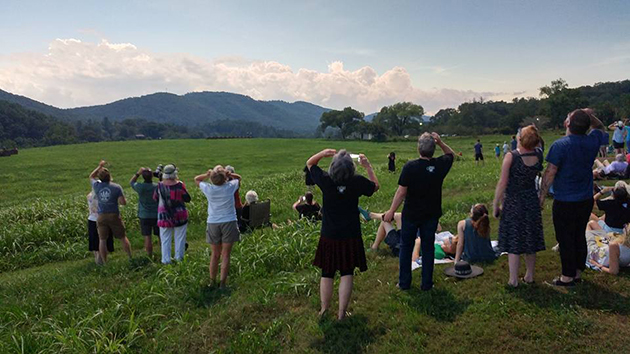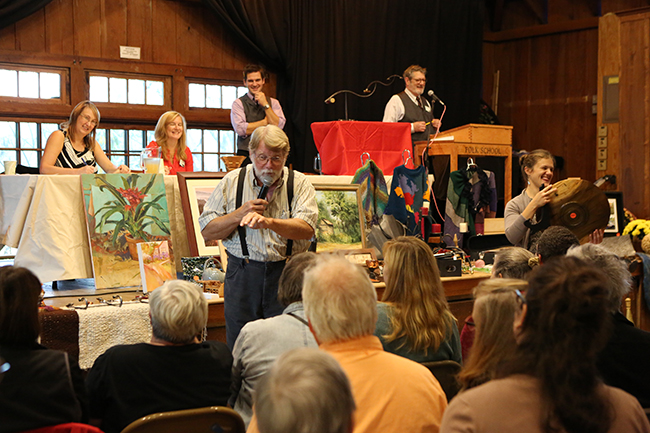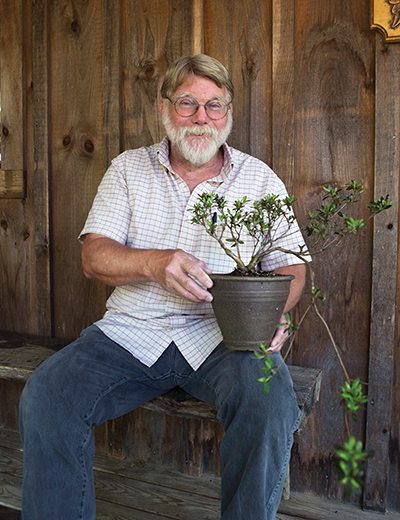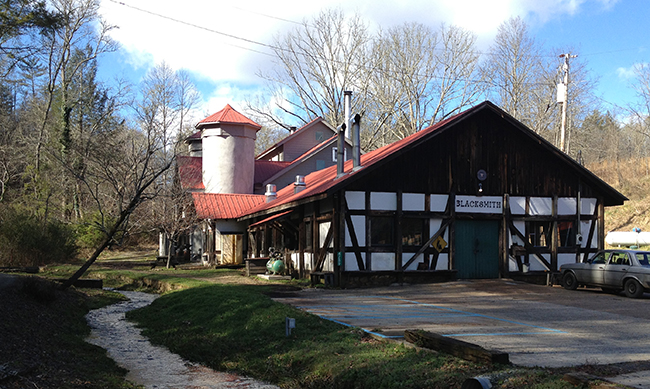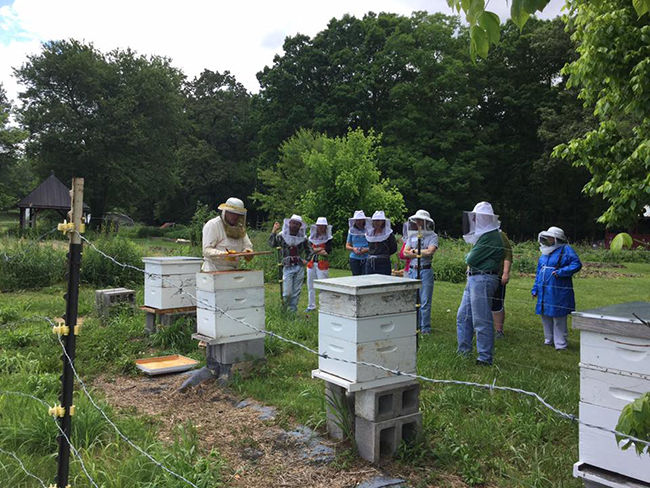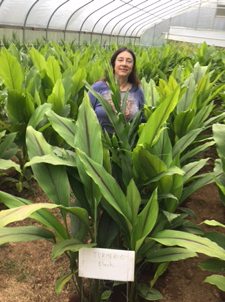[caption id="attachment_16959" align="aligncenter" width="630"]
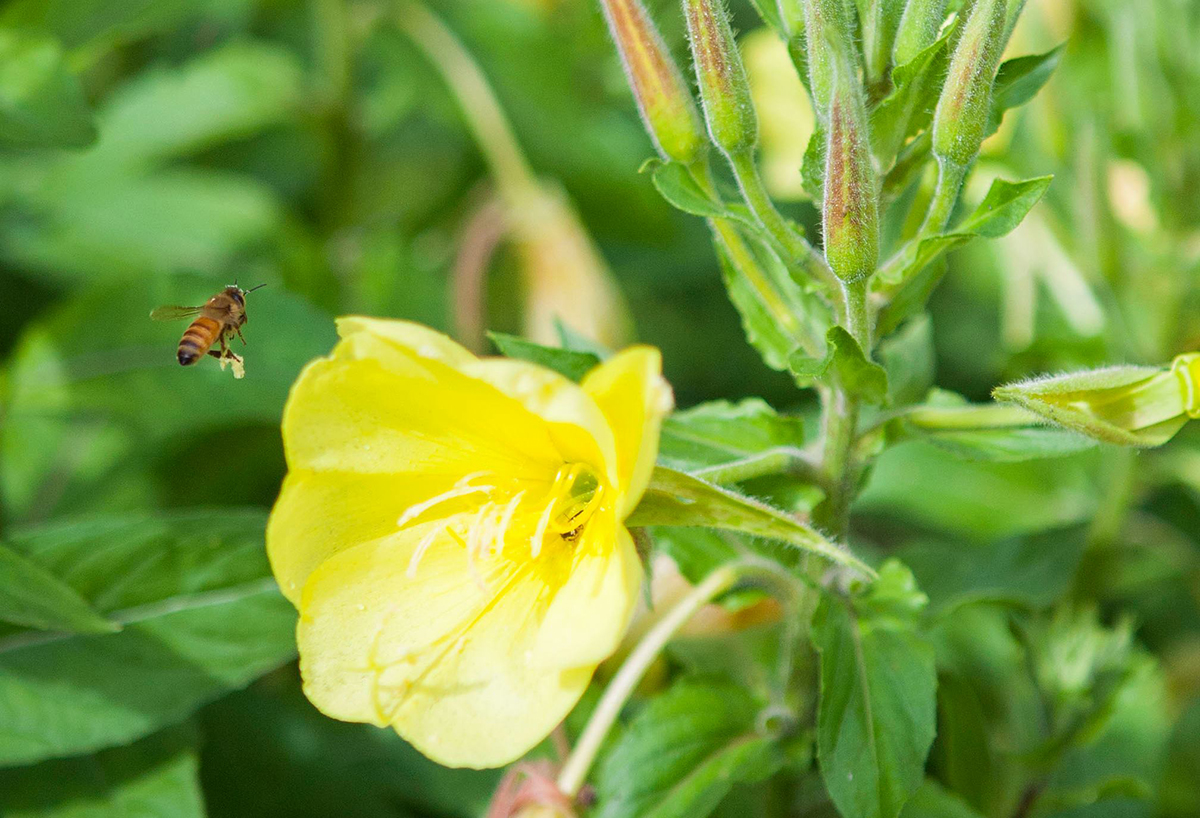
The morning after the bloom, a bee visits the Tina James Magic Primrose.[/caption]
[caption id="attachment_16955" align="alignright" width="333"]
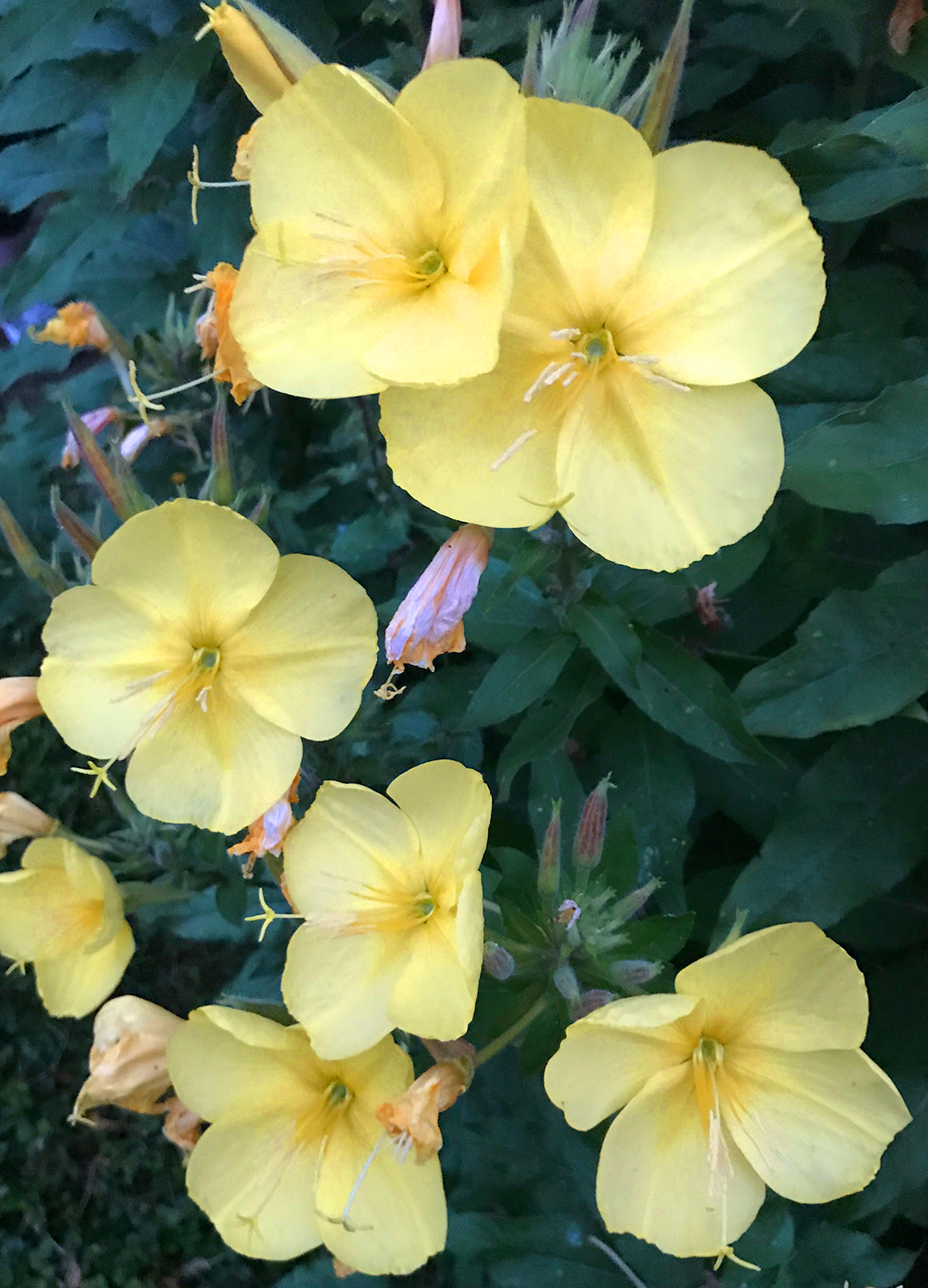
The fresh Evening Primrose blooms at dusk[/caption]
Our
Tina James Magic Primrose plants have been putting on quite a show for the past few weeks at dusk in the Vegetable Garden and behind the Painting Studio. The tightly wound yellow blooms dramatically open as night falls (around 9 p.m.)
. Before the show starts, visitors walk around the plant to see if they can guess which bloom will lead be the leading note of the overture. Excitement and anticipation is high and it is easy to feel giddy, like a little kid again.
The sepals (the green outside of the flower) peel down the flower and the tightly wound yellow trumpet begins to relax and open. Within seconds, before your very eyes, the blossom opens fully and settles into a large bright yellow flower with a delicate, sweet smell. It's is like watching time-elapsed photography in real time; it's just incredible. Each bloom only lasts through the night until mid-morning of the next day, attracting pollinators like bumble bees and butterflies during the morning and large humming bird-sized lunar moths at night.




